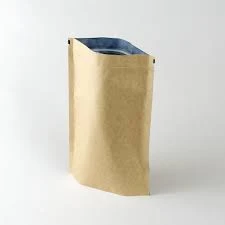Metallic Visions in Modern Design and Innovation
Exploring the Allure of Metalized Surfaces A Fusion of Art and Technology
In an age where technology and artistry often blend seamlessly, the phenomenon of metalized surfaces emerges as a captivating intersection of these two worlds. From architecture to fashion, and even in everyday consumer products, metalized materials have transcended mere functionality, standing as symbols of innovation and aesthetic appeal. But what exactly defines this concept, and why has it captured the collective imagination of designers, engineers, and consumers alike?
At its core, metalization refers to the process of applying a thin layer of metal to a surface, enhancing its properties and visual appeal. This can be achieved through various methods, including vacuum deposition, sputtering, and electroplating. The result is a surface that gleams with metallic luster, exuding a sense of luxury and sophistication. The versatility of metalized surfaces is evident in their application across industries, providing not only functional advantages – such as increased durability and resistance to corrosion – but also elevating aesthetics to new heights.
In the realm of architecture, metalized surfaces have transformed the way we perceive and interact with buildings. Skyscrapers clad in reflective materials create dazzling displays as they reflect sunlight, altering their appearance throughout the day and imbuing urban landscapes with a dynamic essence. Iconic structures like the Guggenheim Museum in Bilbao or the Torre Agbar in Barcelona showcase how metalized facades can redefine the perception of space, inviting curiosity and admiration. These architectural marvels don't merely serve practical functions; they also provoke emotional responses, fostering a dialogue between the built environment and its inhabitants.
In fashion, the allure of metalized fabrics cannot be overstated
. Designers have tapped into this trend to create garments that shimmer and shine, breaking the boundaries of traditional textile design. Whether it’s a metallic gown gliding down the runway or a chic pair of shoes that catch the light, these pieces evoke a sense of celebration and transformation. Metalized materials are often associated with futuristic aesthetics, reflecting a culture that embraces innovation and the allure of the unknown. Designers like Balmain and Stella McCartney have successfully integrated metalized elements into their collections, proving that fashion is a continual evolution, always seeking new ways to captivate.metalized

Consumer products, too, have embraced the trend of metalization. From the sleek finish of smartphones to the sophisticated look of kitchen appliances, metalized surfaces give products a premium feel. The reflection of metalized coatings not only enhances visual appeal but also contributes to a tactile experience, inviting users to engage more intimately with the objects they utilize daily. This synthesis of form and functionality is a testament to the profound impact that aesthetics can have on consumer behavior, reminding us that beauty plays a crucial role in our choices.
However, the allure of metalized surfaces extends beyond their surface-level appeal. The underlying technology offers significant benefits, including improved durability, lighter weight, and enhanced thermal properties. As industries strive for sustainability, innovations in metalization techniques also pave the way for the development of more environmentally friendly materials. By integrating advanced coatings that reduce waste and enhance recyclability, metalization not only satisfies modern aesthetic demands but also aligns with a growing commitment to ecological responsibility.
Nonetheless, the rising popularity of metalized surfaces brings forth challenges. As products become increasingly uniform in appearance, the risk of homogenization looms. The unique charm of handcrafted or natural materials may be overshadowed by the overwhelming presence of high-gloss, metallic finishes. This tension between tradition and modernity invites critical discourse within design circles, prompting creators to seek balance and authenticity in their work.
In conclusion, the phenomenon of metalization encapsulates a rich tapestry of art, technology, and philosophy. It invites us to consider not only the beauty and innovation encapsulated in metalized surfaces but also the broader implications of their use in our lives. As we continue to navigate a world steeped in technological advancement, the enduring appeal of metalized materials will likely inspire future generations of designers and artists to push boundaries, challenge norms, and explore the endless possibilities that lie at the intersection of form and function. The journey of metalized surfaces is just beginning, and it promises to be as radiant and transformative as the materials themselves.













